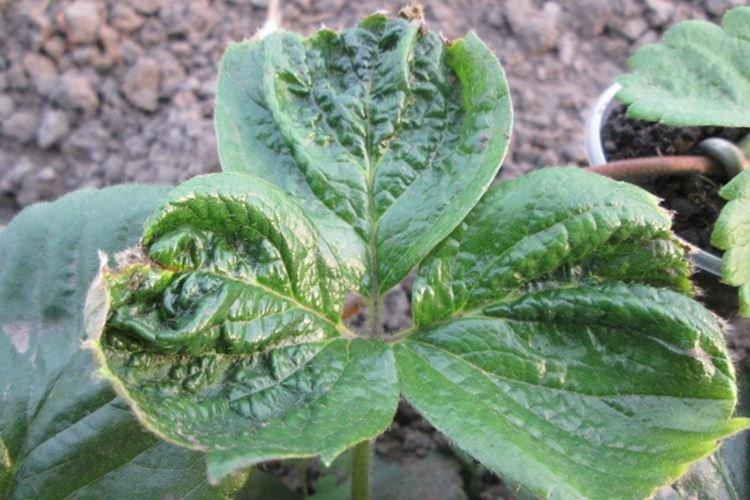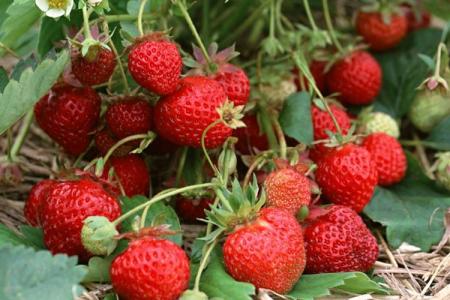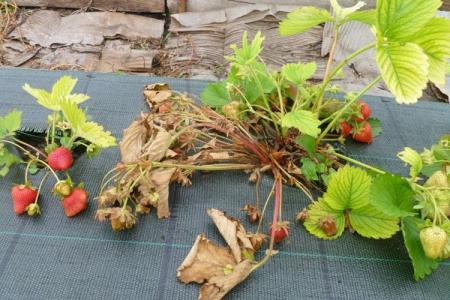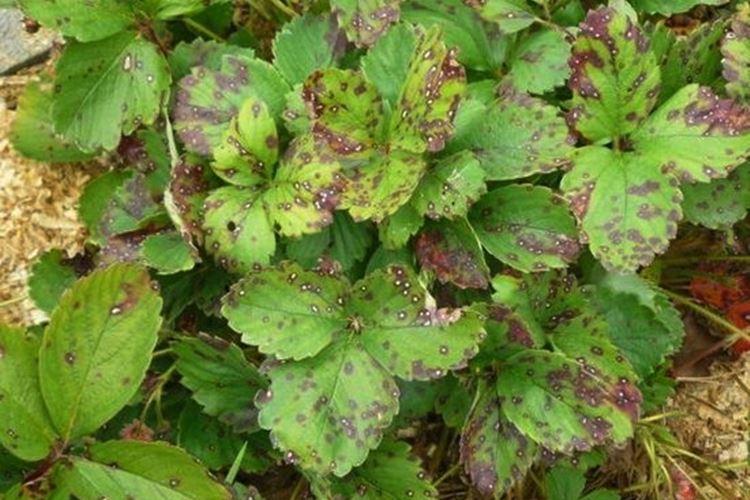
Fragrant strawberry - everyone's favorite and very fruitful berry. Some varieties can be harvested several times a season, from late spring to autumn cold snaps. But all kinds of diseases can destroy an entire bush or even an entire plantation. Many of them first appear on the leaves, so be careful!
Bumps and bumps on the leaves
Due to some fungal infections, the spots can gradually swell and go bumps. Pimples are also left by insects that literally lay eggs.
- Aphids willingly settle on the leaves of strawberries on the back side and breed whole colonies. It is because of her that mounds appear most often, which frighten beginners;
- Small tubercles with brown spots leave behind thrips, which eat all parts of the plant;
- If the bumps more resemble tumors and cover the entire strawberry bush, it is probably a bacterial cancer. Alas, it is incurable, so you need to get rid of damaged plants as soon as possible.
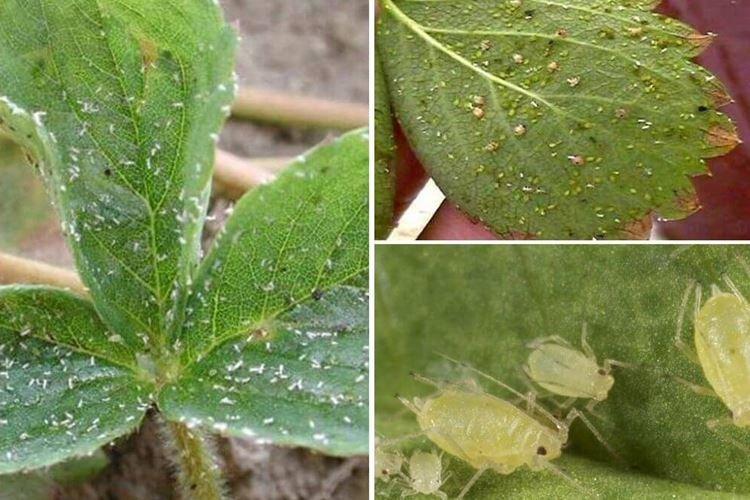
Leaves turn yellow and dry
There is no cause for concern if the leaves start to turn yellow at the end of the season because this is their biological cycle. But if the problem appears in the spring or at the height of summer, you need to urgently act.
- If watering is not done correctly, strawberry leaves dry on hot days or turn yellow and rot on too wet;
- Strawberry leaves turn yellow, wither and wither due to fusarium. The fungus is able to completely destroy the plant in about a month and a half;
- Strawberry leaves dry when affected by gray rot, which is most often manifested during fruiting. The berries are covered with gray moldy fluff in just a couple of days;
- With a lack of iron or magnesium, the leaves turn yellow and dry out from the tips. Sometimes the problem is a deficiency of zinc or manganese, but this is difficult to establish accurately, therefore, it is always recommended to use complex feeding;
- On very hot days, strawberry leaves may also begin to dry out. In order not to accidentally flood the plantation, we recommend that you think over a shelter and shade;
- If the sun is not enough, the leaves will turn yellow in the same way, because the process of photosynthesis directly depends on the amount of light;
- When all the conditions are exactly in order, and the leaves still wither along with the shoots - perhaps this is verticillary wilting;
- Chaotic yellow spots, strokes and stripes that intertwine in complex patterns - a symptom of an incurable viral mosaic.
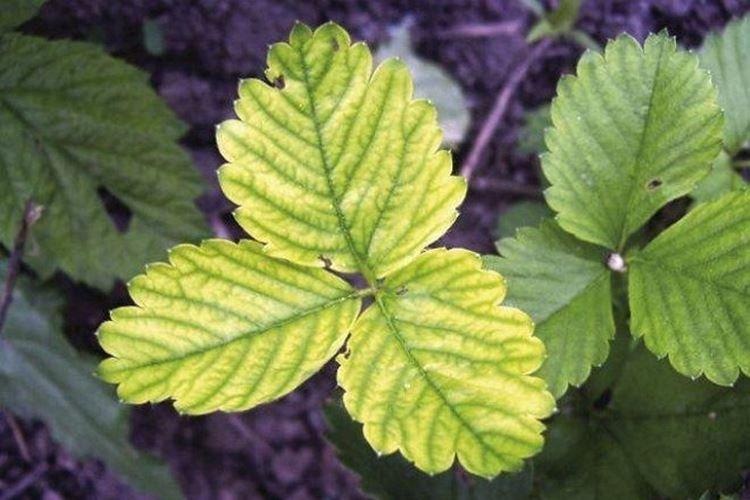
Brown spots on strawberry leaves
Unlike yellow spots, red and brown spots are alarming almost immediately. And not in vain, because most likely the reason is fungi or bacteria, although strawberries may simply not have enough feeding.
- Anthracnose leaves brown spots with a white center, which progresses rapidly on warm spring days. Then these spots can dry out and crack;
- Red and rusty spots are a sign of fungal rust, which also loves warm and humid weather;
- Leaves wilt and turn brown from bottom to top when affected by late blight. The disease affects the root system and young or weak shoots die first;
- Leaves turn red, darken and soften when they start to rot. Most often this is a banal overflow, so you need to establish a regime and dry the earth;
- When damaged by black rot, brown spots on the leaves are combined with black spots on the shoots.
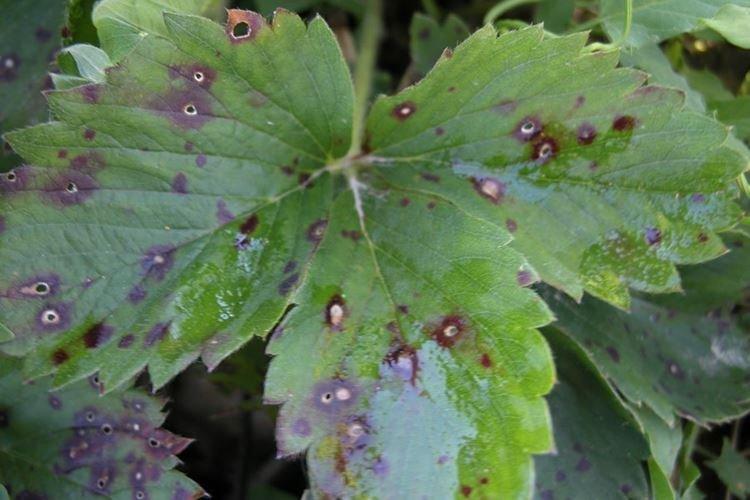
Strawberry leaves turn black
Garden plants are quite hardy and even delicate strawberries are no exception. Therefore, if the leaves have already begun to literally turn black and die off, this may be a sign of a neglected disease.
- Young bushes turn black due to serious damage to the root system, so always carefully select the seed;
- Sometimes strawberries begin to turn black with acute potassium deficiency;
- When the root system rots, then the leaves suffer at rather late stages of the problem. It is already difficult to save such strawberries, so we recommend that you periodically inspect the basal necks;
- Black bloom on the leaves - it can be a sooty fungus that often leaves behind aphids;
- Necrotic spots on strawberry leaves appear in the last stages of Alternaria. But it starts with gray-brown spots and a change in the texture of the plate;
- Small black dots on top of large red spots appear with black spot. They gradually stretch out and take on an oval shape.
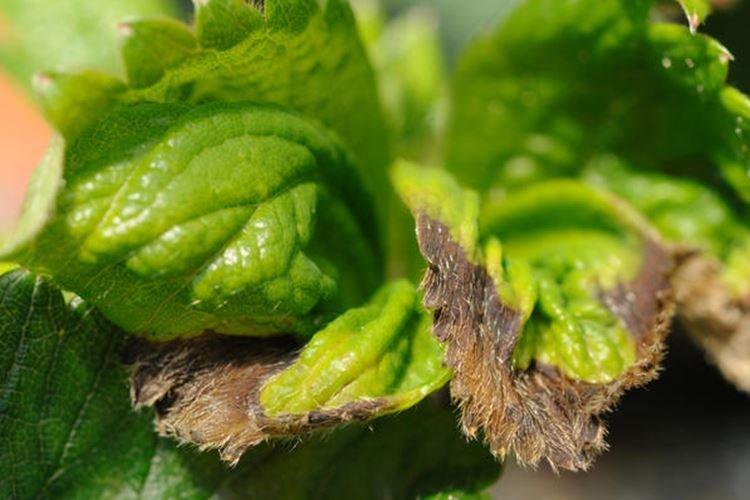
Holes in strawberry leaves
The fragrant strawberry attracts a host of pests, including larvae and caterpillars. It is they who most often leave holes on the leaves, because they simply eat away the pulp.
- Raspberry-strawberry weevil eats not only leaves, but also flower buds of berry crops;
- Larger and brighter nettle-leaf weevil eats leaves at the edges, which makes them seem delicate;
- It is difficult to see the small strawberry leaf beetle, but the gluttonous beetle rapidly eats up all the pulp, except for the shell of the strawberry leaf;
- With white spot, the leaves are covered with white spots with brown or purple edging. Then the light middle of the spots begins to die off and fall out.
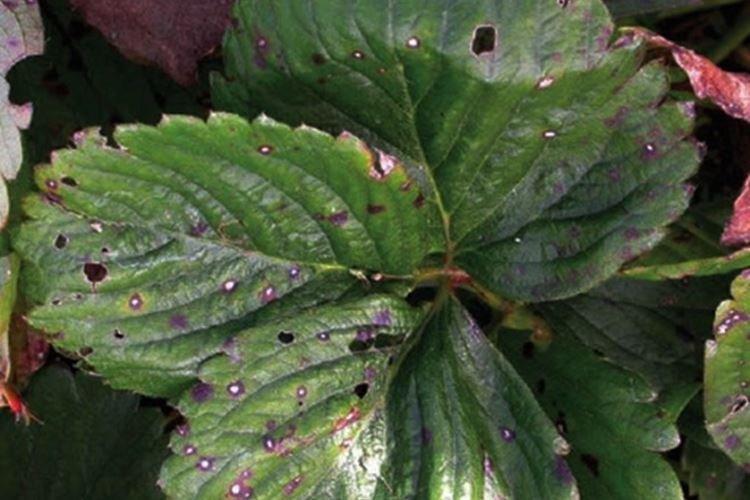
White bloom on strawberry leaves
Sometimes the leaf plates are covered with a velvety white coating that looks as if it is easy to wipe it off with your finger. We strongly do not recommend touching it with your hands at all, because these are fungal spores.
- The main reason for the velvety white bloom is powdery mildew, which can affect all garden crops, without exception;
- On wet days, downy mildew spreads just as readily with similar symptoms and the same treatment;
- White rot is another fungus that leaves behind a soft white fluff and most often affects exactly strawberries with strawberries;
- Spider mites leave small whitish cobwebs that twine around leaves and shoots. Small black bugs most often hide at the base of the leaf blades.
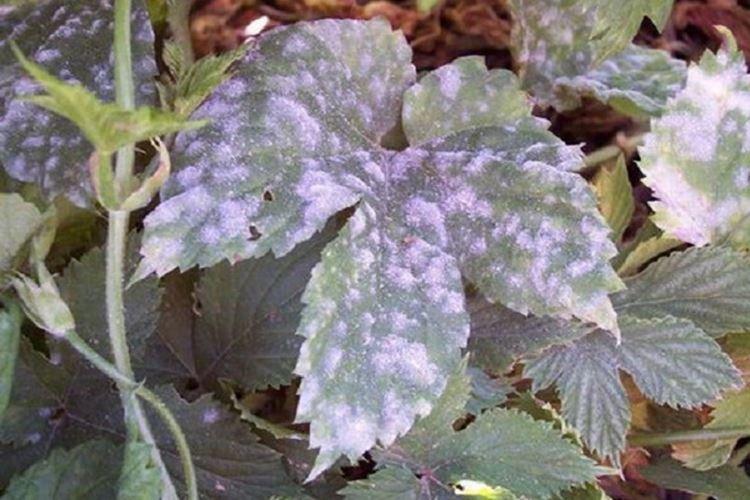
Pale and light leaves
Older leaves can brighten because the plant's resources are spent on crops and young shoots. But if the problem is massive and unexpected, something is definitely going wrong!
- Leaves weaken and fade if the strawberries do not have enough sun or the planting was too thick;
- At the stage of active green mass gain, it is imperative to add nitrogen, because strawberries may not have enough nutrients in the soil;
- The lack of a full-fledged complex feeding also has a bad effect on the deciduous mass.
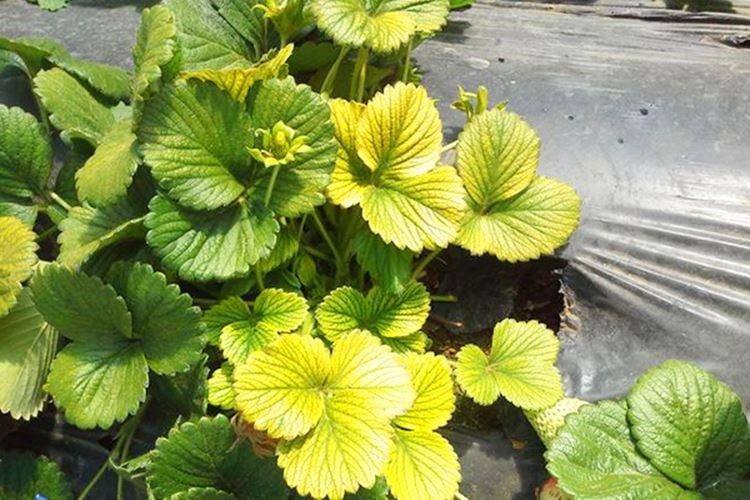
Strawberry leaves curl
If the leaves curl from dryness or pests, this is a purely mechanical problem. The situation stabilizes after eliminating the cause, but this will not work with dangerous viruses and pathologies!
- Leaf rollers pupate inside the twisted leaves. They roll them up with a tube and glue them with their cobwebs;
- The twisting virus is poorly understood and manifests itself differently in different cultures. Unfortunately, strawberries are also periodically affected;
- If the plantation is too dense and there is not enough space between the bushes, the leaves curl, because they are corny suffocating;
- Different types of deformation also indicate a lack of useful components - magnesium, phosphorus, molybdenum, zinc. Always use compound fertilizers according to the schedule and dosage.
